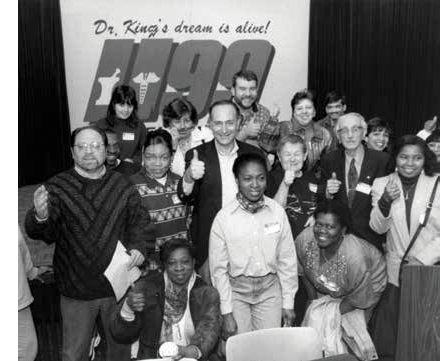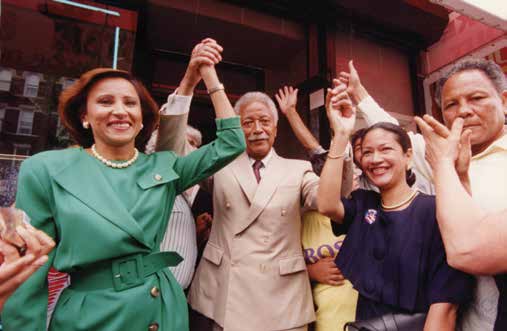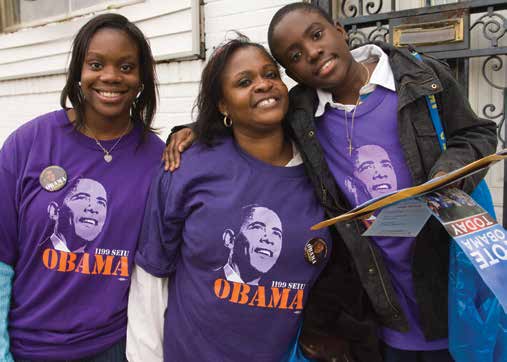HOW 1199 BECAME A POLITICAL POWERHOUSE
October 15, 2022
Member mobilization tipped the balance in key races.

In the 1940s, the Union mobilized support for progressive candidates in the American Labor Party (ALP), which captured many legislative seats during that decade, particularly in the New York City Council. Seven-term East Harlem Congressmember Vito Marcantonio was the ALP’s most popular and effective leader.
1199 was a loyal supporter of Rep. Marcantonio and his political allies. One letter from President Leon Davis to members in the Congressmember’s district read, “Vito Marcantonio has championed the cause of the American people.”
Gloria Arana, a Manhattan Mt. Sinai laundry worker and key leader of the hospital organizing campaign in the late 1950s, recalled in a history of 1199 that a co-worker once took her to a Marcantonio campaign meeting in 1944. When she told the representative of the abysmal working conditions, he suggested she and her coworkers try to organize a union.
The second “Red Scare” following WWII was designed to weaken the labor movement by purging it of its most progressive and militant leaders.

In 1962, 1199 endorsed Republican Gov. Nelson Rockefeller for re-election. In 1963, the governor introduced the bill that extended collective bargaining rights to workers in voluntary hospitals.
During the same decade, 1199 supported President Lyndon Johnson’s Great Society and the candidates who stood behind his historic legislative agenda.
Some of the groundbreaking bills included the Civil Rights and the Voting Rights Acts, the Elementary and Secondary Education Act, the Immigration Act, Medicaid, Medicare, Head Start, and legislation to protect the environment.
As the 1960s drew to a close, 1199 embarked on its national organizing campaign. Its first action in Charleston, South Carolina, failed to win Union recognition. But for the first time, African-Americans were elected to the State Legislature and to the City Council in greater numbers.
In the late 1980s, 1199 emerged as a major political force in New York City. The Rev. Jesse Jackson’s 1988 campaign for president on the Democratic Party line brought together progressives from across the city and state. The state campaign was headquartered at 1199 and led by then 1199 President Dennis Rivera. Thousands of 1199ers helped get out the vote, and Rev. Jackson carried the city.

In 1997, Chuck Schumer relied heavily on 1199’s endorsement and support to defeat powerful three-term Republican incumbent Al D’Amato—who had considerable backing from other unions— and take his seat in NY’s 16th Congressional District.
In 2003, the Union backed staffer Annabel Palma in her successful bid for a City Council seat representing The Bronx. In 2005, 1199 helped former staffer Melissa Mark-Viverito become the first Latina to represent El Barrio (East Harlem) in the New York City Council. In 2014, she became the first woman and person of color to serve as New York City Council Speaker.
One of the greatest triumphs of 1199’s electoral work came in 2008, when tens of thousands of Union members and their families mobilized to elect Barack Obama, the nation’s first African-American president, and help Democrats make big gains in both the Senate and House.
Retirees, particularly in New York and Florida, played a key part in all the campaigns.
In recent years, 1199ers in the Carolinas and Georgia have also made vital contributions. The late Lena Hayes, past president of the Retirees Local, once said in an interview in which she rallied other retirees, “Elections are not a spectator sport, but audience participation.”
1199 Magazine | September / October 2022

